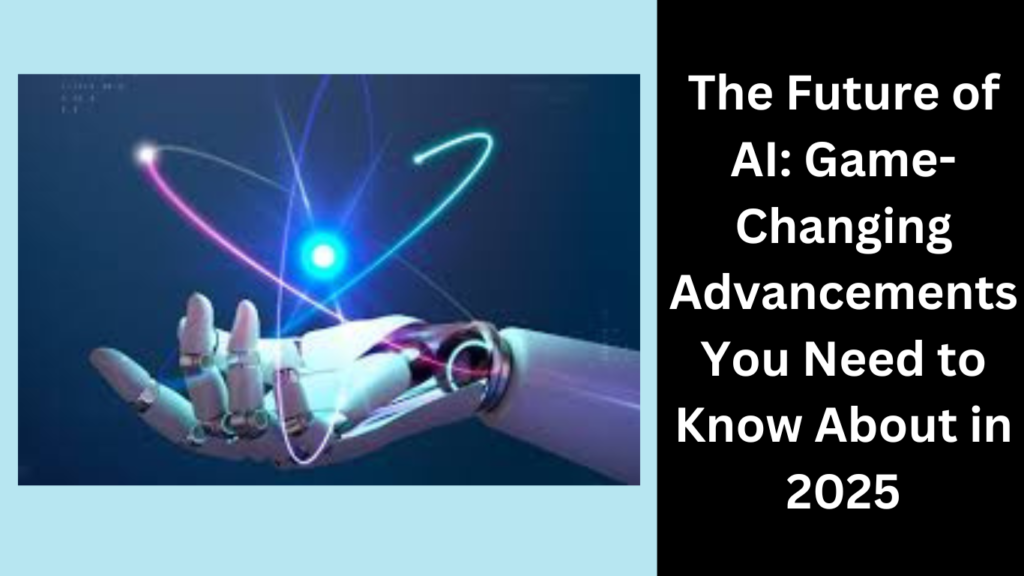The Future of AI: Game-Changing Advancements You Need to Know About in 2025

Introduction
AI is evolving faster than ever, with new innovations reshaping how we interact with technology. From ultra-fast text generation to emotionally intelligent speech synthesis, the latest breakthroughs in artificial intelligence are setting new standards.
This blog explores four groundbreaking AI advancements:
- Tencent’s Hunyuan Turbo S – A blazing-fast AI model
- Inception Labs’ Mercury – A diffusion-based language model
- OpenAI’s GPT-4.5 – The next-generation AI powerhouse
- Hume AI’s Octave – A TTS model with real emotional intelligence
Let’s dive into these revolutionary AI technologies and how they’re changing the game.
1. Tencent’s Hunyuan Turbo S – The Fastest AI Yet
AI That Thinks in Real-Time
Tencent has launched Hunyuan Turbo S, an AI model that eliminates long response times. Unlike traditional “slow thinking” AI models like DeepSeek R1 or Hunyuan T1, Turbo S delivers near-instant responses, cutting latency by 44%.
Why It’s Different
- Fastest AI model available – Delivers answers almost instantly
- Uses a Hybrid Mamba-Transformer fusion – A unique architecture that balances efficiency and power
- Reduces computational cost – Making AI deployment cheaper for businesses
- Excels in logic, mathematics, and general knowledge – Competes with top models like GPT-4.0 and Claude
Who Should Use It?
- Enterprises needing high-speed AI for automation
- Developers who require fast-processing AI models
- Businesses looking to cut AI infrastructure costs
Hunyuan Turbo S is available for free via Tencent Cloud’s API for a limited trial, with competitive pricing afterward.
2. Mercury by Inception Labs – The Future of Text Generation
Diffusion-Based Language Model (DLLM) – A First in AI
Inception Labs introduced Mercury, the first diffusion-based AI for text generation. Unlike traditional AI models that predict tokens sequentially, Mercury generates entire text structures in parallel – making it up to 10 times faster than classic models.
Key Features
- Generates text at over 1,000 tokens per second
- Runs efficiently on Nvidia H100 GPUs
- Improves text fluency and coherence through iterative refinement
- Competes with GPT-4 Turbo and Claude 3.5 Haiku
What Makes Mercury Special?
Instead of predicting words one by one, it drafts and refines text simultaneously, mimicking how humans write. This reduces latency significantly and makes AI ideal for real-time applications like customer support and code generation.
Who Benefits from Mercury?
- Businesses requiring fast AI responses
- Developers seeking a drop-in replacement for LLMs
- Enterprises focusing on real-time automation
Inception Labs is offering Mercury via API and on-prem deployment, making it easy to integrate into existing workflows.
3. OpenAI GPT-4.5 – Smarter, Faster, and More Human
The Next Evolution of AI
GPT-4.5 is OpenAI’s latest flagship model, offering enhanced contextual understanding, emotional nuance, and problem-solving. It reduces hallucinations and provides better alignment with human feedback for more reliable AI interactions.
What’s New in GPT-4.5?
- Improved factual accuracy and creativity
- Advanced reasoning capabilities – Ideal for legal, scientific, and coding applications
- Multimodal AI – Can process text, images, and even files
- More natural, human-like responses
Who Can Use GPT-4.5?
Currently, ChatGPT Pro users and API developers have access, but OpenAI plans a broader rollout soon. Businesses, researchers, and content creators can all benefit from its enhanced capabilities.
4. Hume AI’s Octave – AI That Understands Emotion
The World’s First Emotionally Intelligent TTS Model
Hume AI launched Octave, a text-to-speech (TTS) AI that understands and replicates emotions. Unlike traditional robotic-sounding TTS systems, Octave adjusts tone, intonation, and delivery based on context.
How Octave Stands Out
- Captures emotional nuance in speech – Can sound exasperated, joyful, or serious
- Ideal for virtual assistants, customer support, and storytelling
- Customizable for brand-specific voices
- Bridges the gap between mechanical and human communication
Who Should Use Octave?
- Businesses looking for more engaging AI-driven customer interactions
- Content creators who want dynamic voice narration
- Accessibility solutions needing natural-sounding TTS
Octave is currently available for trial on Hume AI’s platform, where users can test its expressive capabilities.
5. Why These AI Advancements Matter
What These Breakthroughs Mean for AI’s Future
The AI industry is shifting toward faster, smarter, and more human-like models. These four advancements represent key trends:
✔ Speed and Efficiency – AI models are getting faster, reducing wait times
✔ Accuracy and Reliability – Improved AI means fewer hallucinations
✔ Emotional Intelligence – AI can now understand and express emotions
✔ Cost Reduction – Lower deployment costs make AI more accessible
Whether you’re a business leader, developer, or AI enthusiast, these innovations will shape the future of automation, communication, and creativity.
6. Final Thoughts
AI technology is advancing at an unprecedented pace. From Hunyuan Turbo S’s speed to Octave’s emotional intelligence, these innovations highlight AI’s potential. Whether you’re looking for faster text generation, smarter chatbots, or more natural AI voices, these models offer exciting new possibilities.
Want to stay ahead in AI? Try out these models today and explore how they can transform your workflows.
7. FAQs
1. What makes Hunyuan Turbo S different from other AI models?
Hunyuan Turbo S is designed for instant responses, reducing latency by 44% and excelling in logic and mathematical reasoning while keeping deployment costs low.
2. How is Mercury different from traditional AI models?
Mercury uses a diffusion-based approach, generating text in parallel instead of sequentially, making it 10 times faster than traditional AI models like GPT-4.
3. Is GPT-4.5 better than GPT-4?
Yes, GPT-4.5 offers improved accuracy, reduced hallucinations, better emotional intelligence, and enhanced reasoning, making it more reliable for businesses and developers.
4. Can Octave truly understand emotions in text?
Yes, Octave analyzes text context and adjusts tone, intonation, and delivery to match emotional intent, making AI-driven speech more expressive and human-like.
5. Which AI model is best for real-time applications?
Both Hunyuan Turbo S and Mercury are excellent choices for real-time applications, with Turbo S offering instant responses and Mercury enabling fast text generation.